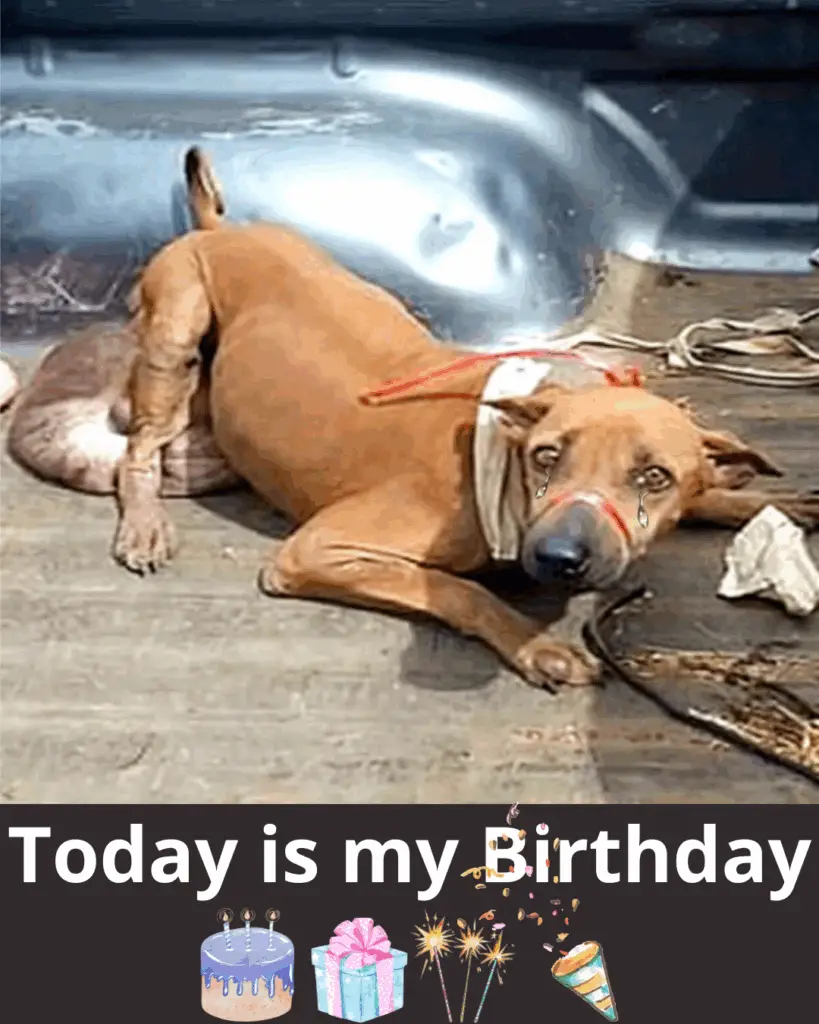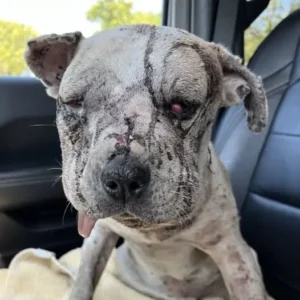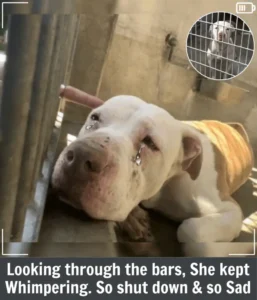A Silent Struggle on the Streets
In the sun-scorched streets of Phetchabun province, Thailand, a silent tragedy unfolded every day. Among the cars, motorcycles, and daily chaos of urban life, a stray dog wandered aimlessly—barely surviving.
To most passersby, he was just another stray, a common sight in many parts of the country. But anyone who stopped to truly look would have seen something far more heartbreaking.
This dog carried a massive tumor on his abdomen, so large that it swayed and pulled his body downward with every step.
The weight of it was not just physical—it represented the burden of pain, abandonment, and utter loneliness. His fur was matted and thin, his eyes sunken with fatigue, and his spirit nearly broken.
The tumor had grown to such an extent that it distorted the way he walked, forced him into awkward, agonizing movements, and made even the most basic tasks—like eating or lying down—a painful endeavor.
Despite his suffering, no help came. The world kept moving, and he was left behind, fading further into misery.
Time passed. Days turned into weeks, weeks into months. The tumor grew unchecked, and hope grew smaller with each setting sun.
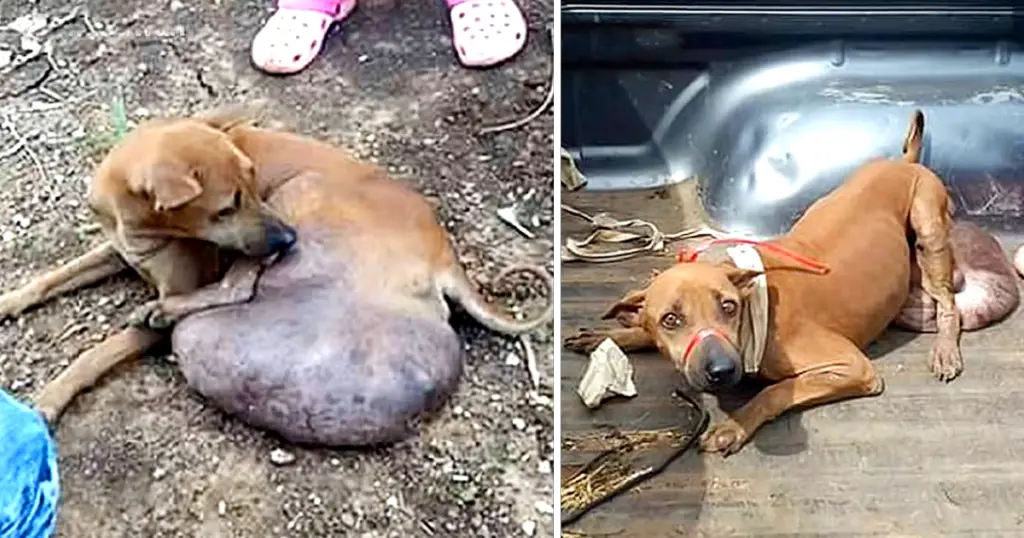
The Moment Everything Changed
But not everyone looked away.
One day, someone finally did see him—not just glance, but truly see the suffering soul beneath the weight of disease and neglect.
Photos were taken, shared online, and eventually reached a rescue team based in Pattaya, over 450 kilometers away.
Though they were used to difficult cases, this one struck a deep chord.
They knew the road ahead would be long—both literally and emotionally. But they made the decision to act, knowing that this dog’s life depended on them.
With no time to waste, the rescue team organized a journey from Pattaya to Phetchabun.
It was a six-hour drive each way, through winding roads and relentless heat. But for them, it wasn’t just a mission—it was a lifeline.
They knew the risks. They knew the dog might not survive surgery. But letting him continue to suffer—or worse, die alone on the street—was not an option.
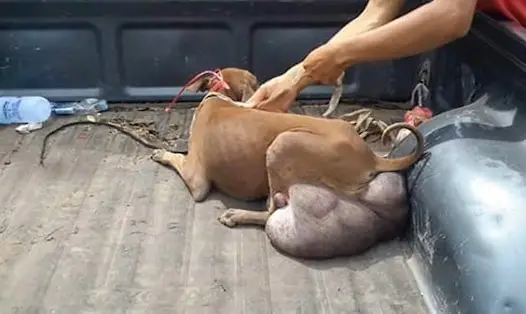
The Rescue: A Race Against Time
When the team finally found the dog, it was clear how urgent the situation was. The tumor had grown even more since the first photos. The dog’s condition was fragile, and his energy was fading.
Carefully, they secured him and transported him back to Pattaya. The long ride was tense, filled with quiet hope and silent prayers that they’d made it in time.
Once at the veterinary clinic, the dog was examined immediately. The prognosis was uncertain. Surgery was risky, especially given the tumor’s size and his weakened state. But the team moved forward. It was his only chance.
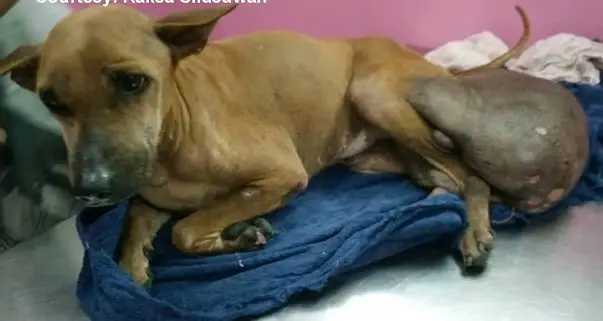
Surgery and Survival
The operation was long and complex. The tumor had wrapped around muscle and tissue, and removing it would require not only precision but the removal of one of the dog’s legs.
Hours passed. The veterinary team worked meticulously. Finally, the tumor was removed. A weight—both literal and symbolic—was lifted from the dog’s body.
The next few days were critical. Post-surgical infection, blood loss, and trauma were all serious concerns. But the dog fought. Slowly, he began to eat.
He slept peacefully for the first time in what may have been years. Each day brought a little more strength.
Though he had lost a leg, he had gained something far more important: a second chance at life.
One Month Later: A Different Dog
Thirty days after the surgery, the transformation was astonishing.
The once-exhausted, suffering dog was now alert, curious, and—most remarkably—hopeful. Though he was still adjusting to life on three legs, he was learning quickly.
His body, once dragged down by illness, now moved with surprising energy. He played, wagged his tail, and began to form bonds with the people around him.
What had seemed like a hopeless case had become a symbol of resilience.
His scars were visible, reminders of the trauma he had survived. But they did not define him.
What defined him now was his courage, his capacity to heal, and the spark in his eyes that no longer flickered in despair, but burned with life.
Healing the Heart: Trusting Again
While his physical recovery was underway, emotional healing was just as important.
Years—or perhaps a lifetime—on the streets had made him cautious. At first, he flinched at sudden movements and avoided touch.
But the rescue team knew healing takes more than medicine. It takes kindness. Consistency. Patience.
They offered soft words, slow movements, and unconditional affection. Over time, the dog began to lean into their hands instead of pulling away. He began to wag his tail not just out of instinct, but out of joy.
Every small gesture of trust was a victory—proof that even the most wounded souls can learn to love again.
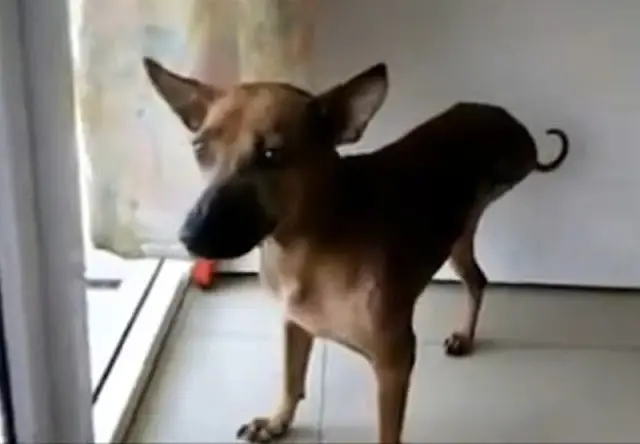
A Life Worth Saving
This dog’s journey—from the streets of Phetchabun to a healing sanctuary in Pattaya—is more than just a rescue story. It’s a powerful reminder of what compassion can achieve.
He had every reason to give up. The world had ignored him. Pain had defined his life. And yet, he didn’t give up. And neither did those who chose to see him.
Now, he moves through the world not with shame or fear, but with pride. Three legs. One giant heart. And a future that is finally filled with promise.
Final Thoughts: The Power of Compassion
Not every story ends this way. Many animals like him don’t get a second chance. But this story stands as a testament to what’s possible when people care enough to act.
It reminds us all of something simple but profound: kindness matters.
Whether it’s stopping to help an animal in distress, supporting rescue efforts, or simply choosing to see rather than look away—these small choices can mean the difference between life and death.
This dog’s transformation didn’t happen by chance. It happened because someone chose to care.
And that choice made all the difference.
Because sometimes, all it takes to save a life—is to see it.

